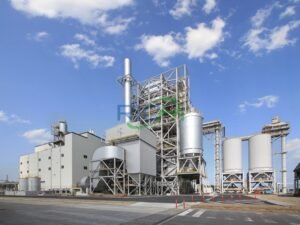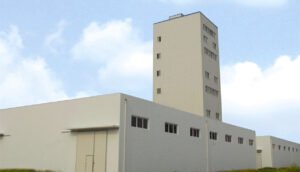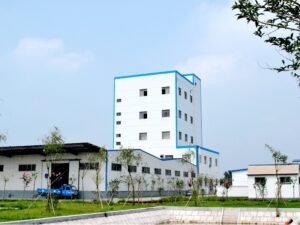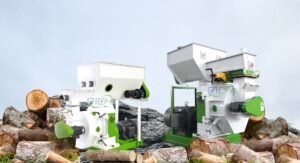
In the dynamic landscape of food processing, belt dryer machines have emerged as indispensable equipment, playing a pivotal role across various stages of food production. These versatile machines offer a broad array of functions that significantly contribute to product quality, efficiency, and safety in food factories. This article explores in-depth the diverse functions of belt dryer machines and their critical significance in modern food processing operations.
Overview of Belt Dryer Machines
Before diving into their specific functions, it’s essential to understand the fundamentals of belt dryer machines and their operational principles. Belt dryers, also known as conveyor dryers, feature a perforated conveyor belt that moves food products through a drying chamber. Hot air is circulated through the chamber, typically in concurrent, counter-current, or cross-flow patterns, to effectively remove moisture from the food products.
Primary Functions of Belt Dryer Machines in Food Factories
Moisture Reduction The fundamental function of a belt dryer is moisture reduction, which serves several critical purposes:
- Preservation: Lowering moisture content inhibits microbial growth, thereby extending the shelf life of food products.
- Texture Enhancement: Controlled drying can enhance the texture of foods, making them crisper or chewier as desired.
- Weight Reduction: Removing water decreases product weight, potentially reducing transportation costs.
Uniform Drying Belt dryers excel in providing uniform drying across batches of food products:
- Consistent Quality: Uniform drying ensures all parts of the product achieve the desired moisture level, maintaining consistent quality.
- Prevent Over-drying: Controlled environments prevent over-drying, which can adversely affect taste, texture, and nutritional value. (Related post:https://www.richipelletmachine.com/pet-food-dryer/)
Temperature Control Precise temperature control is another crucial function of belt dryers:
- Nutrient Preservation: Controlled temperatures help preserve heat-sensitive nutrients, vitamins, and flavors.
- Texture Management: Different drying temperatures can achieve various textures in food products.
- Color Retention: Proper temperature control preserves the natural color of food products during drying.
Continuous Processing Belt dryers facilitate continuous processing, essential for large-scale food production:
- High Throughput: Continuous operation allows for higher production volumes compared to batch drying methods.
- Efficiency: Continuous processing reduces labor costs and enhances overall operational efficiency.
- Consistency: Continuous drying maintains consistent product quality across large batches.
Customizable Drying Conditions Modern belt dryers offer flexibility with customizable drying conditions tailored to different food products:
- Multi-zone Drying: Different dryer sections can be set to varied temperatures and airflow rates.
- Humidity Control: Advanced models allow humidity control within the drying chamber.
- Adjustable Belt Speed: Conveyor belt speed adjustments control drying times.
Energy Efficiency Designed with energy efficiency in mind, belt dryers incorporate several features to minimize energy consumption:
- Heat Recovery Systems: Many belt dryers reuse exhaust air through heat recovery systems, reducing overall energy usage.
- Insulation: Proper chamber insulation minimizes heat loss.
- Optimized Air Flow: Efficient airflow designs maximize heat transfer with minimal energy input.
Product Handling and Transportation Beyond drying, belt dryers fulfill crucial roles in product handling:
- Gentle Product Handling: The conveyor belt system gently handles delicate food products.
- Integrated Cooling: Some belt dryers include cooling sections to cool products before packaging.
- Sorting and Inspection: In-line sorting and inspection of products are facilitated during the drying process.
Sanitation and Food Safety Belt dryers significantly contribute to food safety in processing operations:
- Easy Cleaning: Designed for easy cleaning and sanitation, critical for maintaining hygiene standards.
- Microbial Control: Reduced water activity in food products during drying naturally controls microbial growth.
- Allergen Management: Proper design allows effective cleaning between batches, crucial for allergen control.
Versatility in Product Types Belt dryers accommodate a wide range of food products:
- Fruits and Vegetables: From sliced apples to diced onions, belt dryers effectively process various fruits and vegetables.
- Grains and Cereals: Ideal for drying rice, oats, and other grains.
- Meat and Fish Products: Suitable for drying jerky, fish flakes, and other protein-based products.
- Snack Foods: Efficient in producing dried snacks like vegetable chips.
Quality Control and Consistency Belt dryers play a pivotal role in maintaining product quality and consistency:
- In-line Moisture Monitoring: Many models feature moisture sensors for real-time monitoring.
- Automated Control Systems: PLC-based systems ensure precise management of drying parameters.
- Data Logging: Advanced systems offer data logging capabilities for quality assurance and traceability.
Flexibility in Production The flexibility of belt dryers supports modern food production needs:
- Quick Product Changeovers: Designed for rapid transitions between different product types.
- Scalability: Belt dryers can scale to meet varying production demands.
- Integration: Easily integrated into larger production lines for seamless operation.
Environmental Control Belt dryers contribute to environmental control within food processing facilities:
- Dust Control: Effective airflow management helps control dust, enhancing air quality.
- Odor Management: Exhaust systems can include mechanisms for odor control.
- Noise Reduction: Modern designs incorporate features to reduce operational noise.
Product Development and Innovation Belt dryers facilitate food product development and innovation:
- Experimental Runs: Flexibility allows for testing new product formulations.
- Texture Development: Different drying profiles aid in developing unique food textures.
- Functional Ingredients: Capability to incorporate and dry functional ingredients into food products.
Compliance with Regulations Belt dryers help food factories adhere to regulatory standards:
- HACCP Compliance: Design and operation can align with Hazard Analysis Critical Control Point (HACCP) principles.
- FDA Standards: Many belt dryers meet FDA standards for food processing equipment.
- Energy Efficiency Standards: Compliance with energy efficiency regulations is increasingly prioritized.
Cost-Effectiveness Despite initial investment costs, belt dryers offer long-term cost-effectiveness:
- Reduced Labor Costs: Automation minimizes manual labor requirements.
- Energy Savings: Efficient designs result in lower energy consumption compared to other drying methods.
- Reduced Waste: Precise control reduces product waste due to inadequate drying.
Conclusion
In summary, belt dryer machines in food factories surpass simple moisture removal, serving as versatile tools critical for ensuring product quality, safety, and efficiency. From preserving nutrients and enhancing textures to facilitating continuous production and complying with regulatory standards, belt dryers are integral to modern food processing operations. As food technology advances, these machines will likely evolve further, incorporating advanced controls, improved energy efficiency, and enhanced customization capabilities. Investing in a high-quality belt dryer can significantly enhance product quality, operational efficiency, and market competitiveness in the evolving food industry landscape.
For details please contact: Richi manufacture
WhatsApp:86 138 3838 9622
Email:enquiry@richipelletmachine.com






